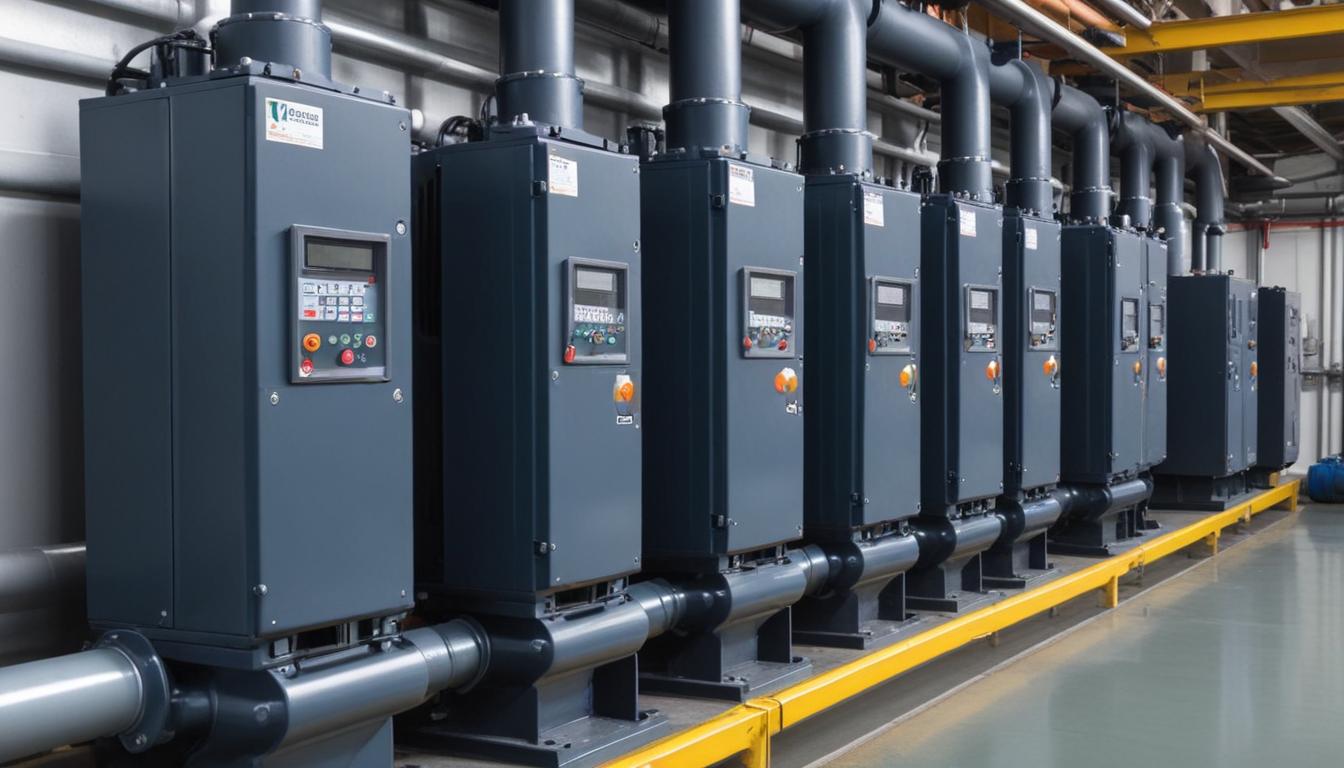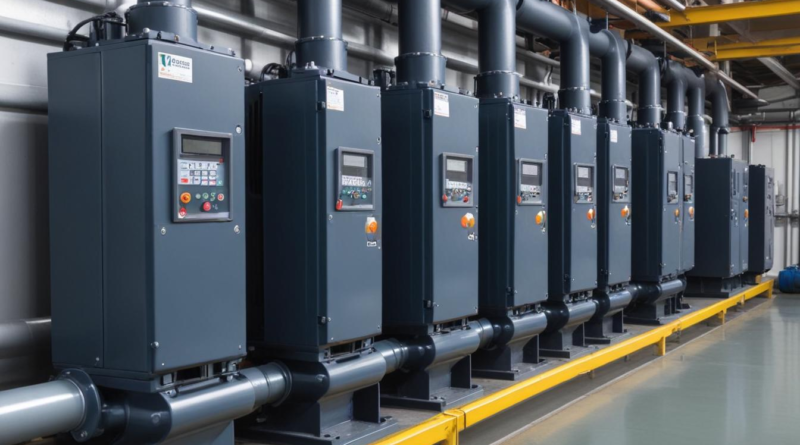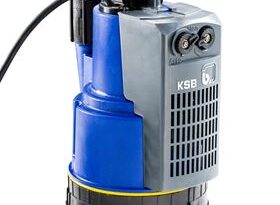benefits of variable frequency drives for pumps
Implementing variable frequency drives with pumps significantly enhances energy efficiency by allowing precise control over motor speeds to match system demand. This adaptability leads to substantial energy savings compared to traditional fixed-speed operations. The key mechanisms through which energy efficiency is improved include:
- Demand-Based Operation: VFDs adjust the pump speed based on real-time requirements, ensuring that energy is not wasted on unnecessary high-speed operation.
- Reduced Power Consumption: Lower motor speeds decrease the overall power usage, directly translating to lower energy bills.
- Mitigation of Peak Demand Charges: By optimizing energy usage, VFDs can help shift energy consumption away from peak periods, reducing demand charges.
A comparative analysis of energy consumption with and without VFDs for pump systems illustrates the potential benefits:
| System Configuration | Annual Energy Consumption | Estimated Energy Savings |
|---|---|---|
| Fixed-Speed Pump | 150,000 kWh | – |
| VFD-Controlled Pump | 100,000 kWh | 33% |
The table demonstrates that integrating VFDs can lead to energy consumption reductions of up to one-third, highlighting the effectiveness of this technology in promoting energy-efficient pump operations. Additionally, the ability to fine-tune pump performance not only conserves energy but also aligns with sustainability goals and regulatory requirements aimed at reducing overall energy usage.
Extended equipment lifespan
Integrating variable frequency drives into pump systems plays a crucial role in extending the lifespan of equipment by minimizing wear and tear on various components. This enhancement is achieved through several mechanisms that collectively reduce the stress and strain typically experienced by pumps during operation.
- Soft Starting and Stopping: VFDs enable gradual acceleration and deceleration of pump motors, preventing the sudden inrush currents and mechanical shocks associated with traditional fixed-speed systems. This gentle ramping reduces stress on bearings, seals, and other critical components, thereby prolonging their operational life.
- Consistent Operating Conditions: By maintaining optimal motor speeds that align with real-time demand, VFDs ensure that pumps operate within their designed parameters. This consistency prevents the excessive wear that can result from operating pumps at unnecessarily high speeds or under fluctuating loads.
- Reduced Mechanical Vibrations: Variable speed control allows for smoother operation of pumps, minimizing vibrations that can lead to fatigue and eventual failure of mechanical parts. Lower vibration levels contribute to a more stable and durable pump system.
- Temperature Control: VFDs help manage the thermal load on motors by adjusting speeds according to demand, reducing overheating risks that can degrade electrical components and insulation materials over time.
A comparison of equipment lifespan with and without the use of VFDs underscores the tangible benefits of this technology:
| System Configuration | Average Equipment Lifespan | Maintenance Frequency |
|---|---|---|
| Fixed-Speed Pump | 10 Years | Annual |
| VFD-Controlled Pump | 15 Years | Biannual |
The table illustrates that the use of VFDs can extend the average lifespan of pump systems by up to 50%, while also reducing the frequency of required maintenance. This extension is attributed to the reduced mechanical and electrical stresses that VFDs impose on the system.
Additionally, the enhanced reliability provided by VFDs leads to fewer unexpected downtimes, ensuring continuous and efficient pump operation. This reliability is especially critical in applications where consistent performance is vital, further highlighting the importance of VFDs in maintaining the integrity and longevity of pump systems.
By mitigating factors that contribute to premature equipment failure, variable frequency drives not only enhance the durability of pumps but also contribute to significant cost savings over the long term through reduced replacement and maintenance expenses.
Enhanced process control
Variable frequency drives provide superior control over pump operations, enabling precise regulation of flow rates and pressure levels to meet dynamic process requirements. This enhanced level of control translates into several significant advantages for industrial and commercial applications.
- Precise Speed Regulation: VFDs allow for exact adjustment of motor speeds, ensuring that pump performance aligns closely with real-time system demands. This precision minimizes overshooting and undershooting of desired flow rates, maintaining optimal process conditions.
- Improved Responsiveness: The ability to rapidly adjust pump speeds in response to fluctuating process parameters enhances the overall responsiveness of the system. This adaptability is crucial in processes where demand can change unexpectedly or rapidly.
- Enhanced Stability: By maintaining consistent operational parameters, VFDs contribute to the stability of the entire system. This stability reduces the likelihood of process disruptions and maintains product quality in manufacturing applications.
- Integration with Control Systems: VFDs can be seamlessly integrated with existing automation and control systems, enabling centralized management and monitoring. This integration facilitates real-time data analysis and decision-making, improving overall operational efficiency.
- Customization of Pump Performance: VFDs allow for the customization of pump performance profiles to match specific application requirements. This flexibility ensures that pumps operate under conditions that maximize efficiency and effectiveness for each unique process.
A comparison of process control capabilities with and without VFDs highlights the enhanced functionality provided by this technology:
| Control Aspect | Fixed-Speed System | VFD-Controlled System |
|---|---|---|
| Flow Rate Adjustment | Limited and imprecise | Highly precise and adjustable |
| Response Time to Demand Changes | Slow | Fast and efficient |
| Integration with Automation | Challenging | Seamless |
| Operational Stability | Variable | Consistent |
The table underscores the superior control capabilities offered by VFDs, which contribute to more stable and efficient pump operations. Enhanced process control not only improves the performance of individual pump systems but also optimizes the overall efficiency of larger interconnected systems.
Furthermore, advanced control features enabled by VFDs facilitate better monitoring and diagnostic capabilities. Operators can access detailed performance data, enabling proactive maintenance and reducing the likelihood of unexpected failures. This level of oversight ensures that pump systems operate at peak efficiency, further contributing to energy savings and operational reliability.
In summary, the enhanced process control provided by variable frequency drives allows for finer adjustments, greater responsiveness, and improved integration with automation systems. These benefits lead to more efficient, reliable, and adaptable pump operations, making VFDs an essential component in modern pump management strategies.
Reduced maintenance costs
 Implementing variable frequency drives with pumps leads to significant reductions in maintenance costs by minimizing wear and tear, enhancing system reliability, and streamlining maintenance schedules. These cost savings are achieved through several key mechanisms that optimize the overall maintenance requirements of pump systems.
Implementing variable frequency drives with pumps leads to significant reductions in maintenance costs by minimizing wear and tear, enhancing system reliability, and streamlining maintenance schedules. These cost savings are achieved through several key mechanisms that optimize the overall maintenance requirements of pump systems.
- Minimized Mechanical Stress: VFDs provide controlled acceleration and deceleration of pump motors, reducing mechanical shocks and stresses on components such as bearings, seals, and impellers. This gentler operation extends the lifespan of these parts, decreasing the frequency and cost of replacements.
- Reduced Wear and Tear: By matching pump speeds to actual demand, VFDs prevent unnecessary high-speed operation that can accelerate the degradation of mechanical components. This targeted operation results in less frequent wear, lowering the need for routine maintenance and part replacements.
- Enhanced System Reliability: The stable and precise control offered by VFDs reduces the likelihood of pump failures and system downtimes. Increased reliability means fewer emergency repairs and less disruption to operations, translating to lower maintenance costs.
- Predictive Maintenance Capabilities: VFDs often come equipped with advanced monitoring and diagnostic features that allow for predictive maintenance. By continuously tracking performance metrics, potential issues can be identified and addressed before they lead to costly breakdowns.
- Extended Maintenance Intervals: The reduced strain on pump components means that maintenance activities can be scheduled less frequently without compromising system integrity. Extended intervals between maintenance tasks lower labor costs and minimize operational interruptions.
A comparative analysis of maintenance requirements with and without VFDs highlights the potential cost benefits:
| System Configuration | Annual Maintenance Frequency | Estimated Annual Maintenance Costs |
|---|---|---|
| Fixed-Speed Pump | Quarterly | $10,000 |
| VFD-Controlled Pump | Biannual | $6,000 |
The table demonstrates a substantial reduction in both the frequency and cost of maintenance when using VFD-controlled pumps. By decreasing maintenance activities from quarterly to biannual intervals and lowering associated costs by 40%, organizations can realize significant annual savings.
Furthermore, the integration of VFDs can lead to additional indirect cost savings:
- Reduced Downtime: Fewer maintenance activities and enhanced system reliability mean less unexpected downtime, which can lead to higher productivity and lower operational losses.
- Lower Spare Parts Inventory: With less frequent part replacements, the need to maintain a large inventory of spare parts is diminished, reducing inventory holding costs.
- Optimized Labor Utilization: Maintenance personnel can be allocated more efficiently, focusing on proactive and strategic tasks rather than reactive repairs.
In summary, the use of variable frequency drives with pumps not only lowers direct maintenance expenses but also contributes to broader operational efficiencies and cost savings. By enhancing system longevity, reliability, and maintenance predictability, VFDs serve as a cost-effective solution for modern pump management strategies.
Environmental benefits
Integrating variable frequency drives with pumps offers significant environmental advantages by enhancing energy efficiency, reducing emissions, and promoting sustainable operations. These benefits are critical in addressing global environmental challenges and aligning with regulatory standards aimed at minimizing ecological impact.
- Reduced Greenhouse Gas Emissions: By optimizing energy usage, VFDs decrease the overall power consumption of pump systems. This reduction directly correlates with lower greenhouse gas emissions, especially in regions where electricity is primarily generated from fossil fuels.
- Lower Carbon Footprint: Enhanced energy efficiency through VFDs leads to a smaller carbon footprint for industrial and commercial operations. Organizations can achieve their sustainability targets more effectively by implementing technologies that minimize energy wastage.
- Decreased Air Pollutants: Reduced energy consumption translates to fewer emissions of air pollutants such as sulfur dioxide (SO₂) and nitrogen oxides (NOₓ), which are harmful to both the environment and human health.
- Conservation of Natural Resources: Efficient pump operation conserves valuable natural resources by lowering the demand for electricity and the corresponding extraction and processing of raw materials needed for energy production.
- Extended Equipment Lifecycle: The prolonged lifespan of pumps and related equipment reduces the frequency of manufacturing new components, thereby decreasing material consumption and waste generation.
- Noise Pollution Reduction: Variable speed operation results in quieter pump performance, contributing to lower noise pollution levels in the surrounding environment.
- Enhanced Compliance with Environmental Regulations: Utilizing VFDs helps organizations meet stringent environmental regulations and standards, avoiding potential fines and promoting corporate responsibility.
A comparative analysis of environmental impact with and without VFDs highlights the substantial benefits:
| System Configuration | Annual Energy Consumption | CO₂ Emissions | Air Pollutants |
|---|---|---|---|
| Fixed-Speed Pump | 150,000 kWh | 75 metric tons | 150 kg SO₂, 100 kg NOₓ |
| VFD-Controlled Pump | 100,000 kWh | 50 metric tons | 100 kg SO₂, 66 kg NOₓ |
The table illustrates a 33% reduction in energy consumption and proportional decreases in CO₂ emissions and air pollutants when using VFDs. These reductions are critical in mitigating the environmental impact of pump operations and supporting broader sustainability initiatives.
Additionally, the implementation of VFDs contributes to:
- Energy Savings: Lower energy usage not only reduces operational costs but also lessens the strain on the electrical grid, promoting a more stable and sustainable energy infrastructure.
- Sustainable Operation Practices: VFDs facilitate the adoption of best practices in energy management, encouraging organizations to pursue continuous improvement in their environmental performance.
- Resource Efficiency: Optimizing pump operations ensures that water and other resources are used efficiently, reducing waste and promoting responsible resource management.
- Lifecycle Environmental Impact: By extending the operational lifespan of pumps, VFDs decrease the overall environmental impact associated with manufacturing, transporting, and disposing of pump components.
Furthermore, the ability of VFDs to provide precise control over pump operations aligns with the principles of sustainable development by ensuring that energy and resources are utilized in the most efficient manner possible. This precision supports not only immediate energy savings but also long-term environmental stewardship.
In conclusion, the environmental benefits of integrating variable frequency drives with pumps are multifaceted and substantial. From reducing greenhouse gas emissions to conserving natural resources and enhancing compliance with environmental regulations, VFDs play a pivotal role in promoting sustainable and eco-friendly pump operations. These advantages make VFDs an essential component in the pursuit of environmental responsibility and sustainability across various industries.




